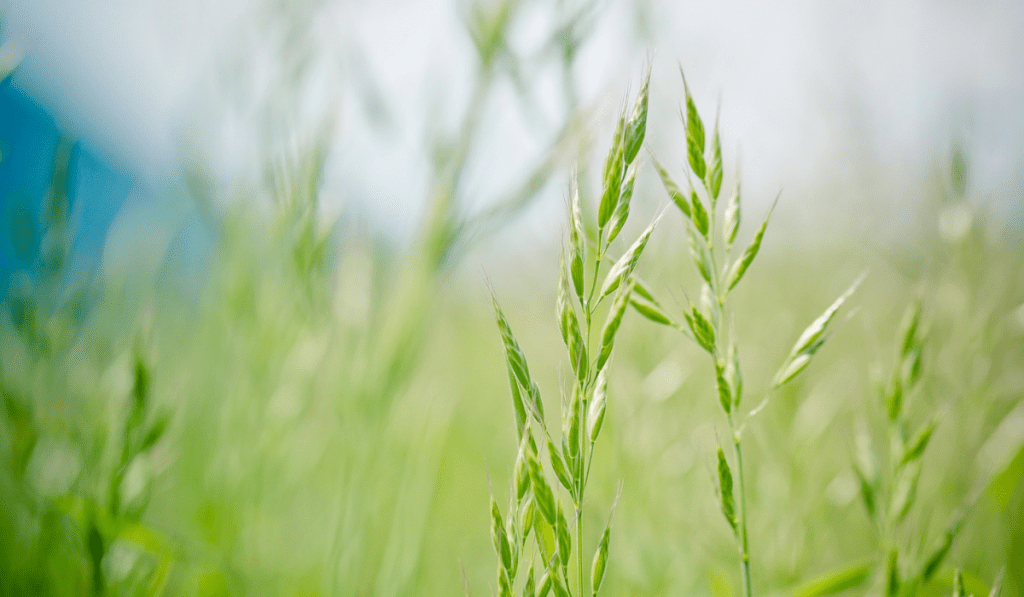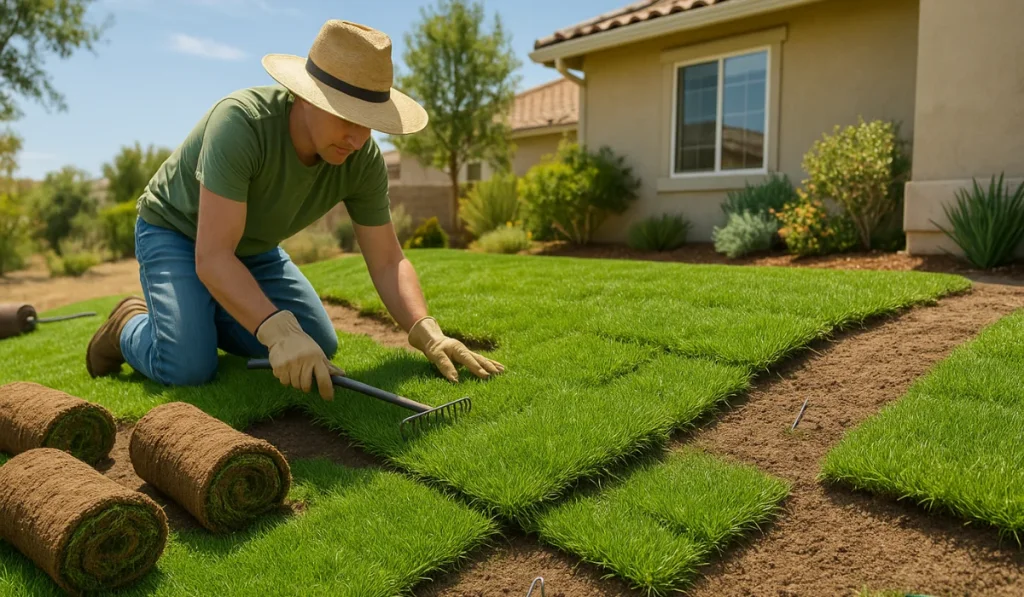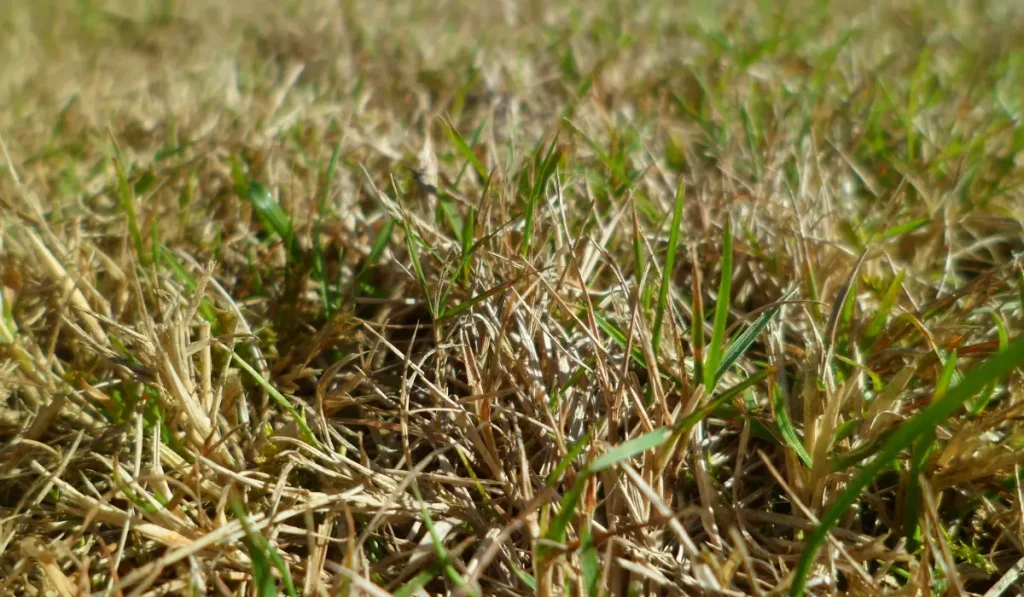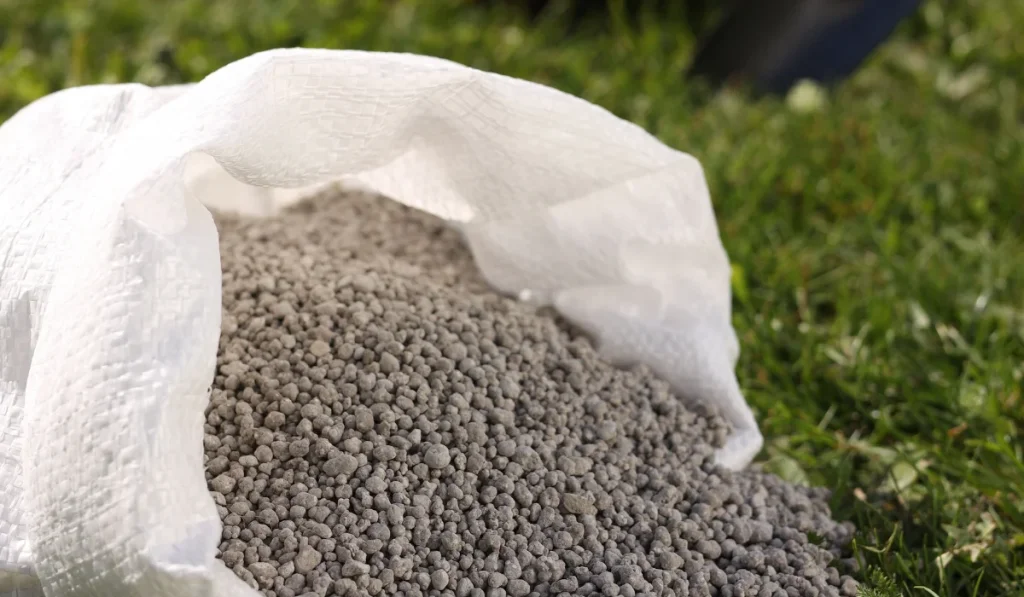Choosing the right grass for your property depends on many factors. You will need to take into consideration your climate, location of where the grass will be placed, how much sun it will have, and how the area will be used, such as whether or not there will be heavy foot traffic or used daily by animals or children. These factors, along with your own personal preference, will help determine what type of grass you should choose.
- Fescue And Blue Grass Blends
- Bermuda Grass
- St. Augustine
- Mow-Free
- Bluegrass
- Blue-Rye
Related: What Is the Best Sod for High Foot Traffic?
Fescue And Blue Grass Blends
Fescue and bluegrass blends are a great option for a number of reasons. This grass holds up great in high traffic areas, stays green all year, is both heat and drought tolerant, and is resistant to common disease problems. The typical fescue/bluegrass blend is made up of 90% fescue and 10% bluegrass, with the bluegrass helping to nicely fill in and thicken your lawn and maintain excellent reparability. This type of blend is usually considered to be your traditional lawn and has a slightly stiffer and thicker blade. There are also types of fescue/bluegrass blends that have a finer, softer, taller blade, along with the other qualities of the traditional fescue/bluegrass blend described above. A 100% fescue is also an option but is harder to find companies that grow that product for mass sales.
Bermuda Grass
Another popular grass choice is Bermuda grass. Bermuda grass is excellent for high traffic areas, is both drought and heat tolerant, resistant to common disease problems, has excellent weed resistance, and can typically be watered less than other grass varieties. Bermuda can also be cut lower (usually 1/2″-3/4″) and will look best when cut with a reel mower (forward moving blade that cuts close to the ground) as opposed to a rotary mower. Bermuda does go dormant (turns brown) during winter months, but can be over seeded with a perennial ryegrass. One type of Bermuda, called Tifgreen, has a very fine blade, is dense, dark green, has a carpet-like appearance, and is often used in locations like school playgrounds. Another type, Tifway, also has a fine blade, adapts well to shade and sun, and is often used for golf courses and football fields. Our Celebration bermuda grass has a blue/green color, a soft fine blade, establishes and recovers quickly, and can be used on a variety of sports fields, playgrounds, and residential areas.
St. Augustine
Another grass variety is St. Augustine, which establishes and grows quickly, has thick, coarse, and tight blades, and is both heat and drought tolerant. It has a carpet-like appearance, and like most bermuda grasses, it needs to be cut with a reel mower and can go dormant in the winter.
While most grass types need a minimum of 6+ hours of sunlight per day, there are special shade blends that consist of fescue, bluegrass, and various shade blends. It can withstand up to 40% daily shade, but will also do well in full sun.
Mow-Free
Another specialty grass type is called mow-free. This grass variety has a relaxed meadow look, has slow-growing, narrow, lax blades, and is dark green and glossy. It does well in the shade and is often used for slopes. Mow-Free sod is usually left un-mowed or mowed once a year. (typical is once or twice mowing a year on this type of grass.)
Bluegrass
Bluegrass (a four-way bluegrass blend) is a nice dark green grass that offers uniform growth and quick healing and recovery from heavy traffic and damage. It does well during colder months and in cooler climates, thus not being as heat tolerant as other grass options. It requires more frequent watering and mowing, but performs well at crowding out weeds.
Blue-Rye
Blue-Rye is a 50% bluegrass and 5% premium ryegrass blend. This blend has a nice blue-green appearance all year, is heat and drought tolerant, and grows well in sandy or clay soil. This type of grass also performs well in high traffic areas and provides quick healing and uniform growth. Because of this excellent quality, it is often used on golf courses and sports fields.
Once you examine the area where you will be installing your grass and look over the characteristics of each grass variety, you will be able to find a great option for what suits both your location and your personal taste.



